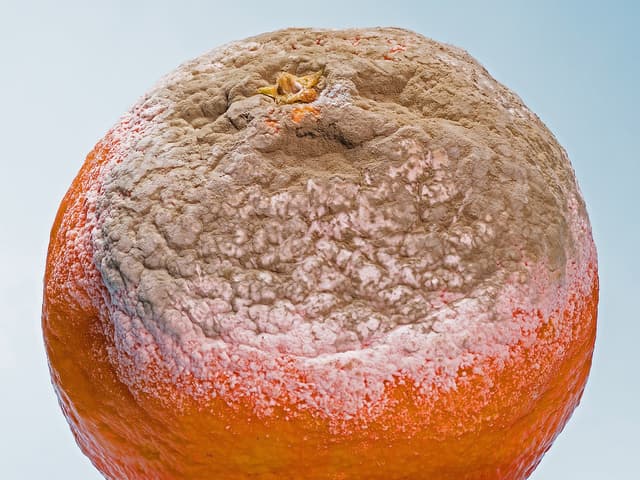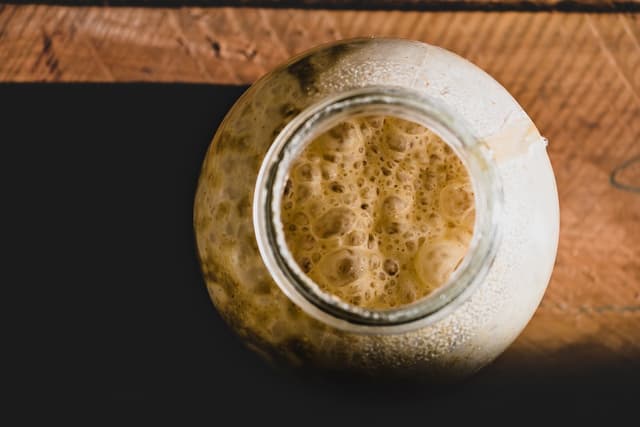Starter quiz
- Which of these materials is a gas?
- milk
- wood
- carbon dioxide ✓
- flour
-
 When a liquid fizzes and bubbles are formed, what is inside the bubbles?
When a liquid fizzes and bubbles are formed, what is inside the bubbles?- nothing
- more of the fizzing liquid
- water
- gas ✓
-
- All living things can reproduce. What does this mean?
- they make more living things of the same type ✓
- they live together with living things of the same type
- they hunt for food
- they have a life cycle
-
- What are micro-organisms?
- living things that are too small to see with the naked eye ✓
- non-living things that can be found almost everywhere
- pieces of equipment that we can use to look at very small things
- incredibly small animals that can live inside other living things
-
- What is a comparative test enquiry?
- an investigation where everyone gets a turn
- an investigation carried out by reading secondary sources
- an investigation where all variables but one are kept the same ✓
- an investigation that doesn’t use much equipment
-
- Which of these statements about fungi are not correct?
- All fungi are too small to be seen with the naked eye. ✓
- All fungi are living things.
- All fungi need nutrition to grow and reproduce.
- All fungi can grow.
- All fungi are harmful to humans. ✓
-
Exit quiz
- Which of these is not a living thing?
 mushroom
mushroom yeast
yeast flour ✓
flour ✓ bacteria
bacteria
- Which of these living things is not a type of fungus?
 mushrooms
mushrooms mould
mould bacteria ✓
bacteria ✓ yeast
yeast
- Yeast is a very useful micro-organism. Which of these processes can we use yeast for?
- cleaning surfaces
- baking ✓
- making beer ✓
- building homes
- growing vegetables
-
- Yeast needs nutrition to survive and reproduce. Where does yeast get its nutrition from?
- it takes in food from its environment ✓
- it makes its own food using photosynthesis
- it sends microscopic spores through air to find food
-
- Scientists control variables during comparative test enquiries. What are variables?
- the findings of an enquiry
- ideas about what you think might happen in the enquiry
- things that can be shown visually in a graph
- things that can affect the results ✓
-
 When yeast takes in food, it produces a gas called ...
When yeast takes in food, it produces a gas called ...- oxygen.
- carbon dioxide. ✓
- fermentation.
- sugar.
- helium.
-
Worksheet
Presentation
Video
Lesson Details
Key learning points
- Yeast is a type of fungus and can be grouped with other fungi including mould, mushrooms and truffles.
- Yeast is living and must get food from the surrounding environment to grow and reproduce.
- Yeast takes in nutrition from food and produces carbon dioxide gas.
- Yeast is a useful micro-organism used in beer and wine making, and baking.
- Scientists control variables during comparative test investigations to see the effect of changing one variable.
Common misconception
Pupils may think yeast is not a living thing because it doesn’t appear to have any of the characteristics of living things when we look at it dry straight from the packet.
Explain that yeast is a type of fungus so it is a living thing in the micro-organisms group. Throughout the lesson, reinforce the characteristics it has that makes it a living thing, such as its ability to grow and reproduce.
Keywords
Fungi - Fungi are a type of micro-organism that feed on organic matter.
Yeast - Yeast is a type of fungus. It is a micro-organism used for making bread.
Carbon dioxide - Carbon dioxide is a type of gas.
Comparative test - In a comparative test, the thing that is being changed has labels, such as the types of materials.
Variables - A variable is something that can be changed, measured or kept the same in an investigation.